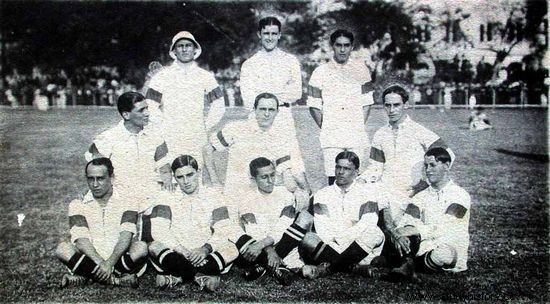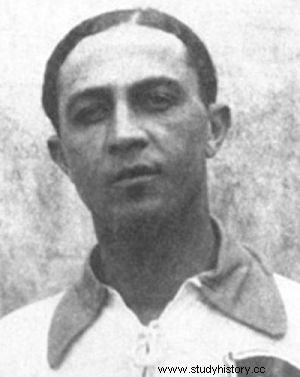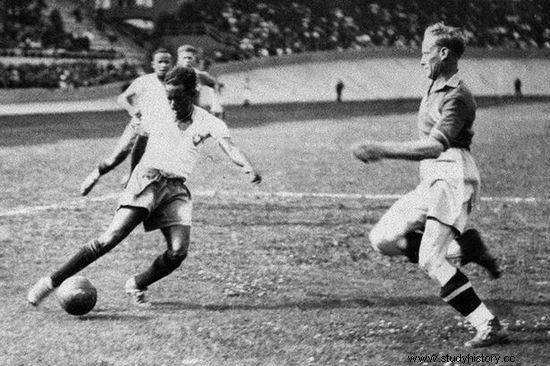Brazil is generally perceived as samba, carnival and… football. It is thought of as a country where people are crazy about football and the love of the game is second to none. The phrase is even used that football in the country of coffee is a religion. But was that also the case at the beginning of the development of football in Brazil? It is hard to imagine that once this sport did not arouse much interest or emotions. And yet.
Football is today a "democratic" discipline:virtually anyone can play it without the need for more financial resources. A hundred years ago it was completely different.
Poverty and racism
Europeans, mainly English, who taught Brazilians to play in the early 20th century, made the sport entertaining for the upper classes. Until the 1920s, football was an aristocratic game in which only the richest participated. The cost of football equipment did not give the poor a chance to test their abilities on the pitch.

The first Brazilian national team in the photo from 1914. You won't find dark-skinned players there.
Balls or shoes imported from Great Britain, intended for the game, remained beyond the reach of the majority of society for financial reasons. Besides, it was not only economic aspects that made football not played by the masses in Brazil in the first years of the twentieth century. The shameful phenomenon was the racism of the time, which practically eliminated black people from practicing football in club teams.
Goalkeeper Artur Friedenreich (he scored over a thousand goals in his career) had to endure humiliation as a second-class citizen. Being a mulatto, he was not able to play for the national team at the beginning of his career, so he finally decided to show his face with rice powder.

Arthur Friedenreich had a hard time either…
In this example of an otherwise genius footballer, you can understand how the color of the skin interfered with playing football. In fact, it was not until the 1930s that racism was eradicated from the stadiums, and the famous Leônidas da Silva played the lead in the Brazilian national team.
"Democratization" of football
From the beginning of the 1920s, football began to lose its elite character. This was favored by the industrialization of the country, which developed faster and faster since the First World War, even despite the great crisis of 1929-1933. As a result, the soccer equipment produced in the country became cheaper.
More importantly, industrialization resulted in the creation of football clubs at individual factories. They were placed in city centers, and rank-and-file workers were allowed to play.
It was conducive to the exchange of experiences and building common awareness, which made it possible to "democratize" not only football, but also, to some extent, social relations. The reasons for opening football to representatives of the poor social classes were more varied, and sometimes completely prosaic.

The first dark-skinned player to play at the World Cup was the legendary Leônidas da Silva.
One can mention, for example, the desire to succeed in the World Cup. The first black footballer at the World Cup was the aforementioned Leonidas, who was appointed to the national team for the tournament in 1934. The struggle for supremacy in the world generated more and more interest, and the growing tolerance for dark-skinned citizens fostered the interest of more people in football.
Thanks to the introduction of the profession in 1933, the poor, who previously treated football as purely entertainment, could now also make it a way of earning money. Thus were the careers of whole hosts of poor boys with favelas born , like Pele or Ronaldo.
